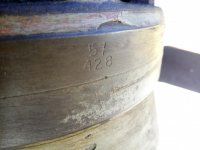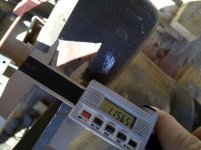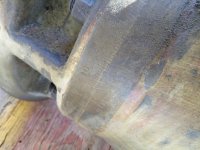JohnnyBouncewell
Plastic
- Joined
- Nov 28, 2017
Hey guys. I picked this up last month accidentally at an auction. It was one of those "contents of these shelves" lots and this behemoth was hidden behind a bunch of other stuff. My knowledge of horizontal mills is quite limited, hell this could even be something else entirely. I really hate scrapping stuff like this when I reckon someone out there would love to have this in their shop.
Anyways, the shop had an older Cincinnati No 1 and a newer Cincinnati Cinel 60 205-12. The only vertical mill was a milltronic something or other (owner took it home before they went under). Given the overall appearance of this attachment, I'm more inclined to think it belongs to the No 1. It appears to have an NT40 or Cat40 taper. The ways are ~8.25" on the minor. I couldn't get any of my instruments inside to measure the gear but if needed, I'll figure something out.
Here are a few pics with all of the markings I could find on it. Thanks in advance for your help! Mods, feel free to bump this to another thread if this is not the best place for it. Let me know if anyone needs to see other pictures and/or measurements.





Anyways, the shop had an older Cincinnati No 1 and a newer Cincinnati Cinel 60 205-12. The only vertical mill was a milltronic something or other (owner took it home before they went under). Given the overall appearance of this attachment, I'm more inclined to think it belongs to the No 1. It appears to have an NT40 or Cat40 taper. The ways are ~8.25" on the minor. I couldn't get any of my instruments inside to measure the gear but if needed, I'll figure something out.
Here are a few pics with all of the markings I could find on it. Thanks in advance for your help! Mods, feel free to bump this to another thread if this is not the best place for it. Let me know if anyone needs to see other pictures and/or measurements.









 .
.

